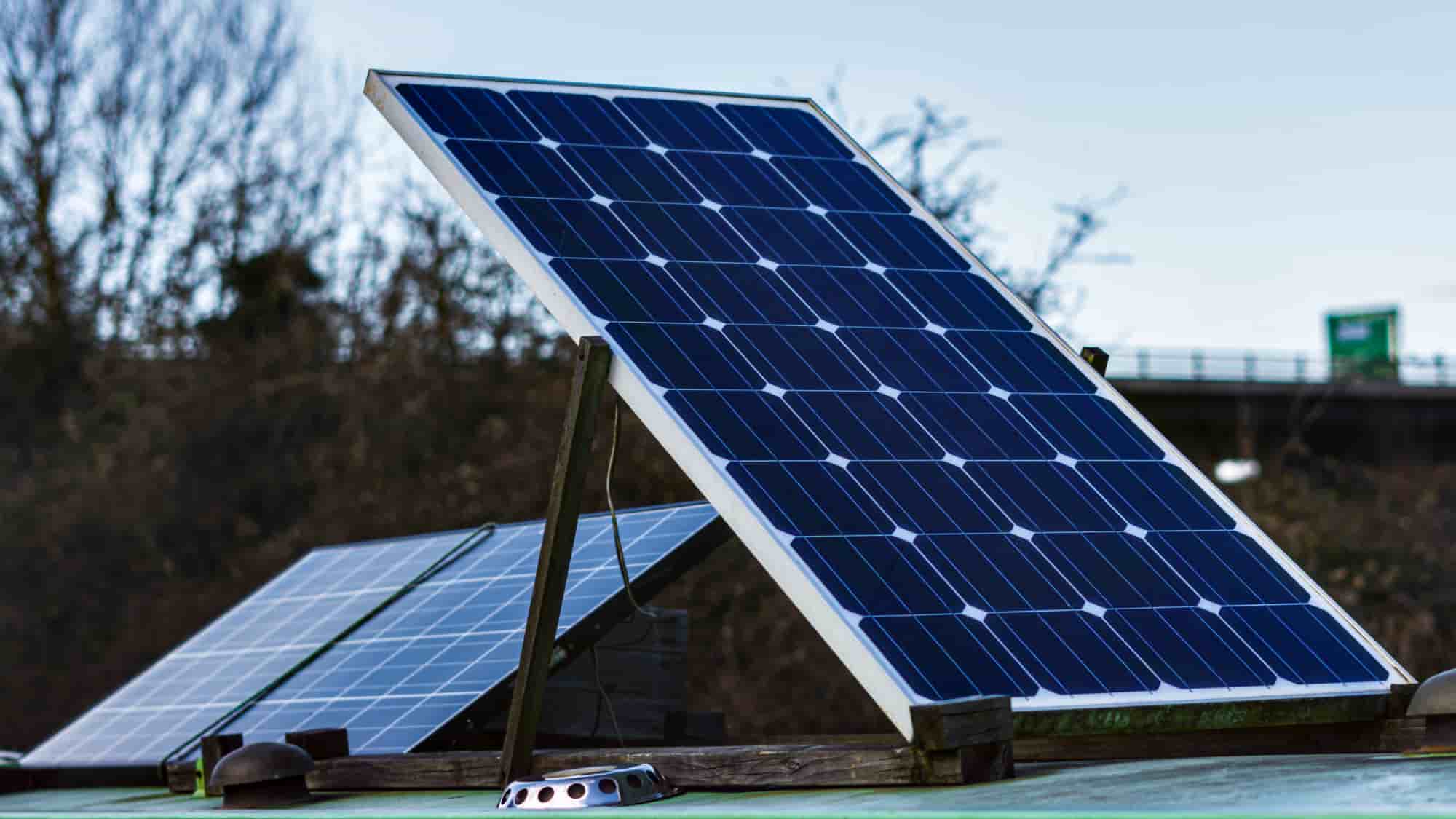Adding an extra solar panel – should I connect my solar panels in series or parallel?
This article will help you determine the best way of wiring an extra solar panel or panels into your existing small-scale solar system. If you don’t know what series or parallel mean – don’t worry, I’ll explain it as we go on!
Many people, myself included, start off with one solar panel. Over time you might find that your power requirements increase, or maybe the panel was the biggest you could afford at the time and now you want to buy another. It’s relatively easy to add an extra panel into your small scale system to increase the amount of electricity you generate.

Panels can have their wires connected together in SERIES or in PARALLEL and I’ll cut to the chase right now and say that in general, for small systems, it’s best to connect them in parallel, but I’ll explain why I say that, and possible situations where you might not do it that way.
Connecting solar panels in series
In a series connection, you take the positive output from the first panel (for example, the panel on the right in the diagram below), and connect that to the negative on the next. If there’s a third panel, take the positive from the second and connect to the negative on the third, and so on. The remaining negative wire (first panel) and positive (last panel) would go to your charge controller.
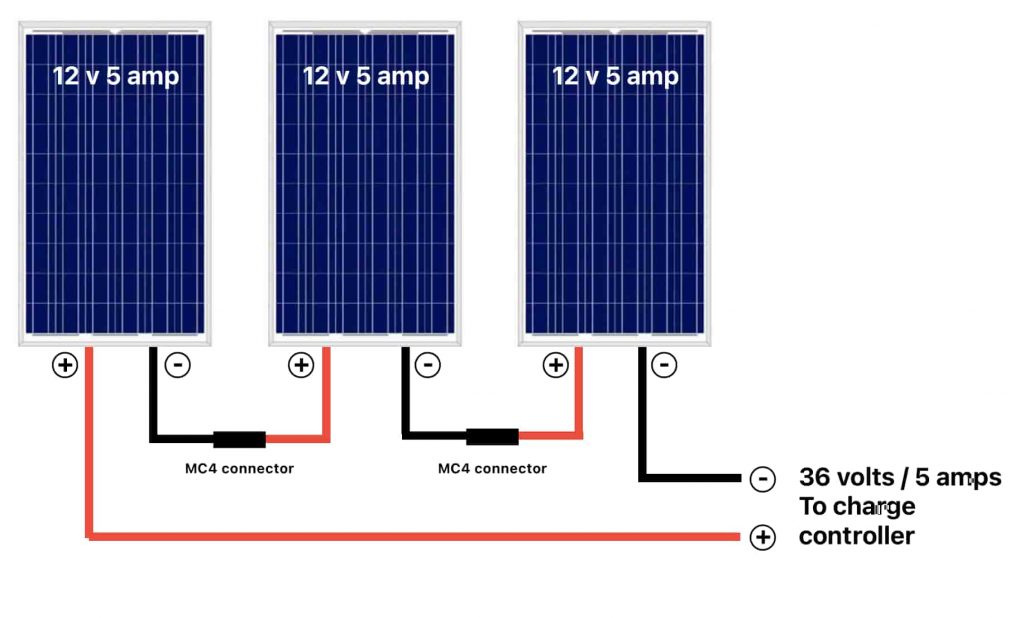
Wiring panels in series has the effect of increasing the voltage but not the current (so two panels, notionally at 12 volts and 5 amps each, would result in 24 volts being produced, but still 5 amps).
One of the advantages of connecting in series is that the current remains relatively low (you are not increasing the current), which means your wiring may not need upgrading. Some charge controllers, such as MPPT controllers, may also work better at higher voltages and could potentially charge your battery faster.
However, there are many disadvantages such as:
- If any of your panels are in partial shade, they will all be brought down to match the worst performing one
- All panels should ideally be of the same specification
- May not work with all charge controllers – check your maximum input voltage
Connecting solar panels in parallel
In a parallel connection, all the positive cables are connected together and all the negatives are connected together. This can easily be done if your panels have MC4 connectors, through to use of ‘splitters’ or branch connectors.
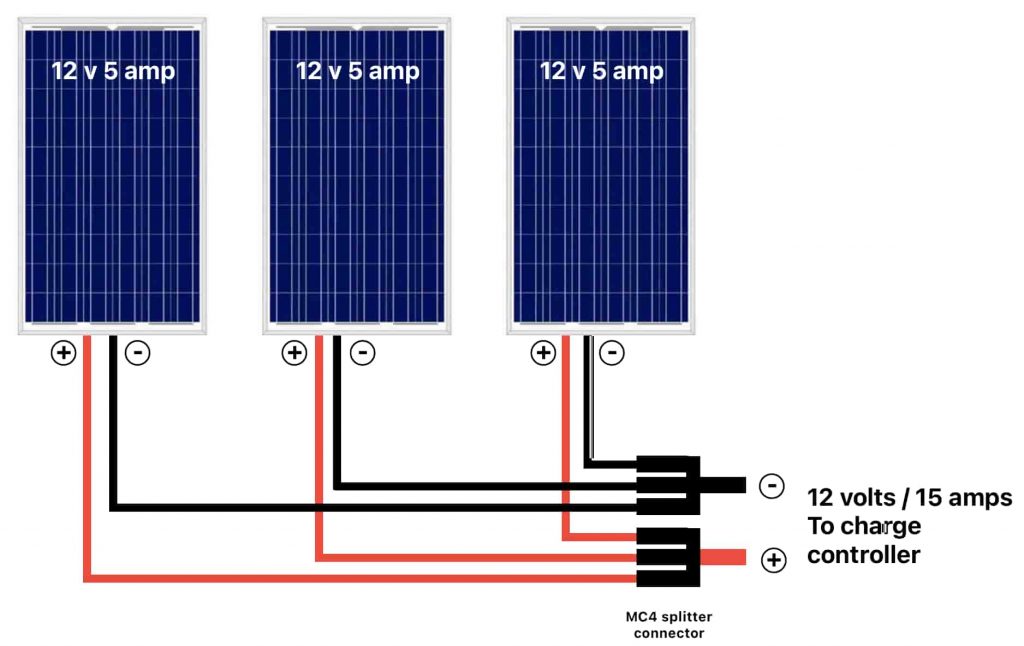
Wiring panels in parallel has the effect of increasing the amps (the current) but not the voltage (so two identical panels, notionally at 12 volts and 5 amps each, would result in 12 volts still being produced, but 10 amps, and with three panels, again the voltage would remain at 12 volts, but the current would be up to 15 amps).
There are several advantages of connecting in parallel:
- Shading on one panel will only affect that panel. Put another way, the performance of a particular panel is not dependent on the others.
- You can mix and match different size, age and capacities of panels.
The disadvantages of parallel connections are that you may need a higher capacity charge controller to handle the increased amps. Potentially the cables from the solar panels to the charge controller may need to be increased for the same reason, although on most small scale systems, they’re probably OK (but don’t assume they are – check!).
Hopefully from that, you can see the reasons why adding solar panels in parallel is usually a better option than adding in series.
One more thing – hybrid connections!
Just when you thought it was safe! To be honest, hybrid connections (mixing series and parallel) won’t apply to most small scale systems, but I’ll mention it for reference.
Let’s say you have two rows of three solar panels (ie six panels in total) – you can connect each individual row in series (adds the voltages, but keeps the current of each row) and then connect the two rows to each other in parallel (adds the current, but keeps the voltages of each row). This means you are increasing the voltage (but not excessively) and increasing the amps (again, not excessively). It would help balance some of the risks of shading you can get with purely series connections, whilst reducing the amps to reduce costs on controller equipment with purely parallel connections.
As I said, you would generally come across hybrid connections on a grid-tied roof installation, so it’s not something I think I would ever encounter in a small scale system, but it’s good to know about it, just in case.
Thinking ahead and making your solar life easier
One of the ways of making your life easier is by choosing solar panels with short wire ‘tails’ that have MC4 connectors already in place. In the image below, you can see the rear of a typical solar panel (this one is by Renogy, but many others are similar) that has short (0.5m) wire tails with appropriate MC4 connectors in place. This enables simple connection of extension wires and/or branched connectors/splitters that will make your life easier in the future.
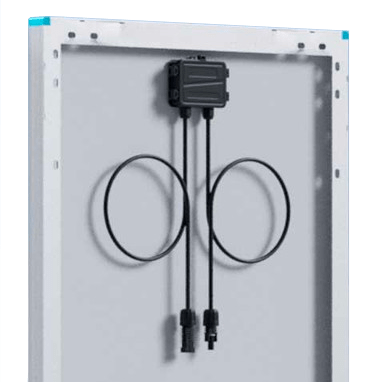
The MC4 branch connectors are readily available as 2-1, 3-1 and 4-1 versions. Note that they will come as a pair as one set is ‘positive’ and the other is ‘negative’.
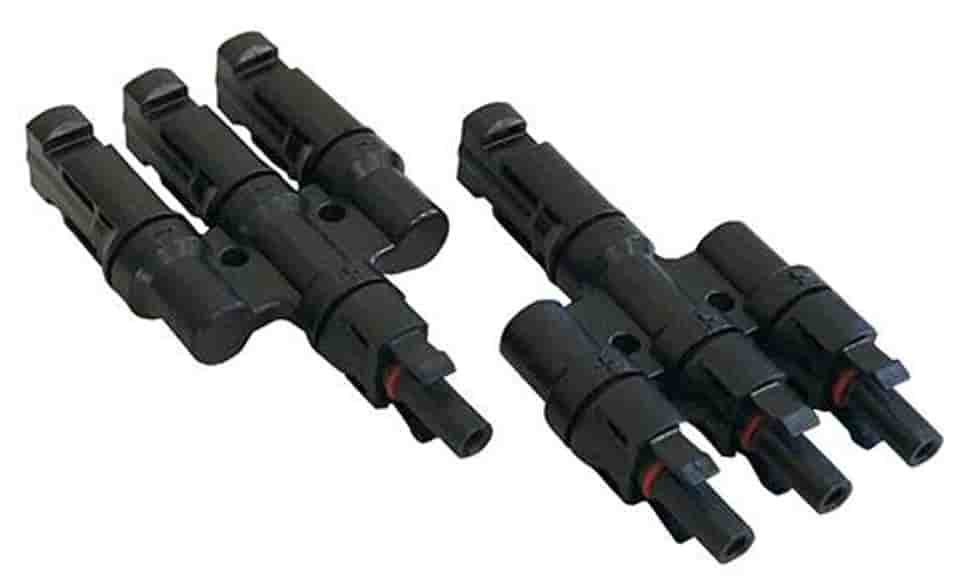
You don’t have to use MC4 connectors, and it’s up to you where and how you join cables. For example, you might run the positive and negative cables individually from your solar panels to near your charge controller, and bunch/join them together there (for parallel connections). Whatever works for you…
Summary and conclusions
- Wiring in series increases the voltage but not the amperage (current)
- Wiring in parallel increases the amperage (current) but not the voltage
- If you’re mixing different sizes and specs of panels, parallel wiring is best
- If you’re likely to have shading/shadows across some of your panels, parallel wiring is best
- Check that your charge controller can handle the increased voltage (for series wiring) or amperage (for parallel wiring)

